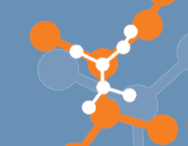Keryx Biopharmaceuticals, Inc. (NASDAQ: KERX) is focused on the acquisition, development and commercialization of medically important pharmaceutical products for the treatment of renal disease. Keryx is developing ZerenexTM (ferric citrate), an oral, ferric iron-based compound that has the capacity to bind to phosphate and form non-absorbable complexes.
KERX today announced that its ferric iron-based phosphate binder drug candidate, Zerenex™ (ferric citrate), met primary and all key secondary endpoints in Phase 3 study. Zerenex™ designed for the treatment of elevated serum phosphorus levels, or hyperphosphatemia, in patients with end-stage renal disease (ESRD) on dialysis.
Zerenex demonstrated a highly statistically significant change in serum phosphorus versus placebo over the four-week Efficacy Assessment Period of the study. In addition, Zerenex met the key secondary endpoints of increasing ferritin and transferrin saturation (TSAT) and reducing the use of intravenous (IV) iron and erythropoiesis-stimulating agents (ESAs) versus the active control over the 52-week Safety Assessment Period of the study.
This long-term study was the final component of the Company’s Phase 3 registration program, which was conducted pursuant to a Special Protocol Assessment (SPA) with the Food and Drug Administration (FDA).
The Company expects to submit a New Drug Application (NDA) with the FDA and a Marketing Authorization Application (MAA) with the European Medicines Agency (EMA) for Zerenex in the second quarter of 2013.
Dr. Julia Lewis, Professor of Medicine, Department of Nephrology, Vanderbilt University School of Medicine, member of the Executive Committee of the Collaborative Study Group and Study Chair of the Zerenex Phase 3 registration program, commented:
We are very excited by the results announced today. The data from this study confirm that Zerenex is a safe and effective phosphate binder with the added benefit of improving patients’ iron levels while utilizing significantly less IV iron and ESAs. There is a clear need for viable alternatives to the marketed phosphate binders, and Zerenex can play a major role by not only providing adequate phosphate binding, but also providing additional benefits.
Primary Efficacy Endpoint
The primary efficacy endpoint of this trial was the mean change in serum phosphorus from baseline (Week 52) to end of the four-week Efficacy Assessment Period (Week 56) versus placebo in the Intent-to-Treat (ITT) group. The ITT group included 183 subjects, representing all subjects who took at least one dose of Zerenex or placebo in the Efficacy Assessment Period and provided at least one post-baseline efficacy assessment.
Key Secondary Efficacy Endpoints Related to Serum Phosphorus
During the 52-week Safety Assessment Period, Zerenex maintained serum phosphorus in the normal range, with highly statistically significant changes in mean serum phosphorus concentration at Weeks 12, 24, 36, 48, and 52 as compared to baseline (Day 0).
Ron Bentsur, Chief Executive Officer of Keryx, said:
We are thrilled by the robust outcome of this pivotal study for Zerenex, particularly with the magnitude of the drug’s effect on iron and anemia parameters, which should prominently differentiate Zerenex versus all the currently marketed phosphate binders. We believe that the ability to treat hyperphosphatemia, while also increasing iron storage parameters and reducing the need for IV iron and ESAs, sets a new paradigm for how a phosphate binder can be used to treat patients with end-stage renal disease on dialysis. We believe that these data position Zerenex to potentially become market leader in the phosphate binder market. We sincerely thank the study investigators and coordinators, and are particularly grateful to the Collaborative Study Group for their expertise, guidance and dedication to the clinical development of Zerenex.


